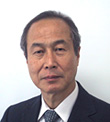|
| |
 |
| |

|
Dr. Yasuhiro Horiike
Fellow Emeritus, National Institute for Materials Science
|
|
|
Policy for Application collection, Screening and Research Area management by the Research Supervisor
The recent progress of nanoscience that controls nanostructures is remarkable. With respect to materials, in addition to nanomaterials represented by CNT and fullerenes, new functions based on nanostructure formation of inorganic, organic, metallic and semiconductor materials have been emerging one after another. Regarding biomaterials, nanostructures have been studied from the dawn of research in this field, and the medical field is beginning to see some innovative healing effects.
Meanwhile, size of nano-devices and their nanoprocessing such as 3-D structure formation with two-photon absorption and FIB in addition to conventional top-down technologies like EB-, immersion-, EUV-lithography, and imprinting is steadly getting smaller.
On the other hand, it is also concerned that physical limitations might arise, and that bottom-up technologies such as self-organization are expected to overcome such obstacles. Technology that combines both top-down and bottom-up has also being developed at present. In recent years, many proposals have been presented for unprecedented highly functional materials and devices achieved through the fusion of inorganic-, organic-, and bio-technology. Meanwhile in the field of observation, in addition to SPM, low energy / high resolution by EB with aberration compensation, has enabled extremely detailed observation of nanostructures.
From the perspective of practical applications, achievements that pave the way for next-generation electronics such as excellent transistor characteristics with CNT and SET that operate at room temperature have been reported. However, numerous challenges remain in replacing CNT with the current gigabit LSI, including chirality control and configuration control for super-high density. This situation is also seen with other materials.
However, even exotic materials or phenomena originating from nanostructures often end up not as practical applications, but merely as subjects of scientific papers.
Therefore, considering practical applications of nanomaterials and nanodevices, unfortunately, the current situation is that only some conventional materials mixed with nanomaterials are used in practice.
Research proposals in this Research Area should consider a utility that fills the gap between nanoscience and practical use, i.e., discovery and originality rooted in nanoscience with its goal set at the creation of “something specific”. The result should produce great impacts that transfer such creations to many other technologies as a “usable technology.” Proposals might also include active involvement of industry-academic collaborations if necessary. Consequently, expected research results will not only be the publication of papers. One of the emphases in evaluation will be how close the accomplishments are to practical use.
Biotechnology, nanoparticles, and organic devices were sellected last year as research projects simply because the proposals are excellent; the research fields covered in this Research Area are not limited to those fields. Outstanding research proposals for this Research Area to be expected an applicable nanotechnology will be strongly encouraged.
Specific studies subject to this Area include the following:
|
・ |
Application to new materials and highly functional devices through control of nanostructures and use of their advantages, its elemental technology, and formulation technology as a system;
|
|
・ |
Creations of devices that are conceptualized from specific images, based on the combination of the top-down and bottom-up approaches;
|
|
・
|
MEMS, NEMS, and micro-nano fluidic devices based on nanomanufacturing technology;
|
|
・
|
Creation of new functional materials by controlling nanostructures for organic, inorganic, and metallic materials, semiconductors, biomaterials, and innovative production technology of such materials or their fusants;
|
|
・ |
Studies of technology for sophistication and speedup of nanomaterial processing and novel functions on surfaces or high-performance/high-quality processing technology at nano-scale;
|
|
・ |
Development of innovative nanostructure observation techniques, and deployment to inventions of exotic materials and processes based thereon; and
|
|
・ |
Nano-measurement and inspection technology that manage the manufacturing process.
|
Nanoscience research, that will innovatively change manufacturing technology, will also be included. However, we expect proposals that present a complete scenario for practical application at the end of the research. |
| |
 |
| |
|
|
